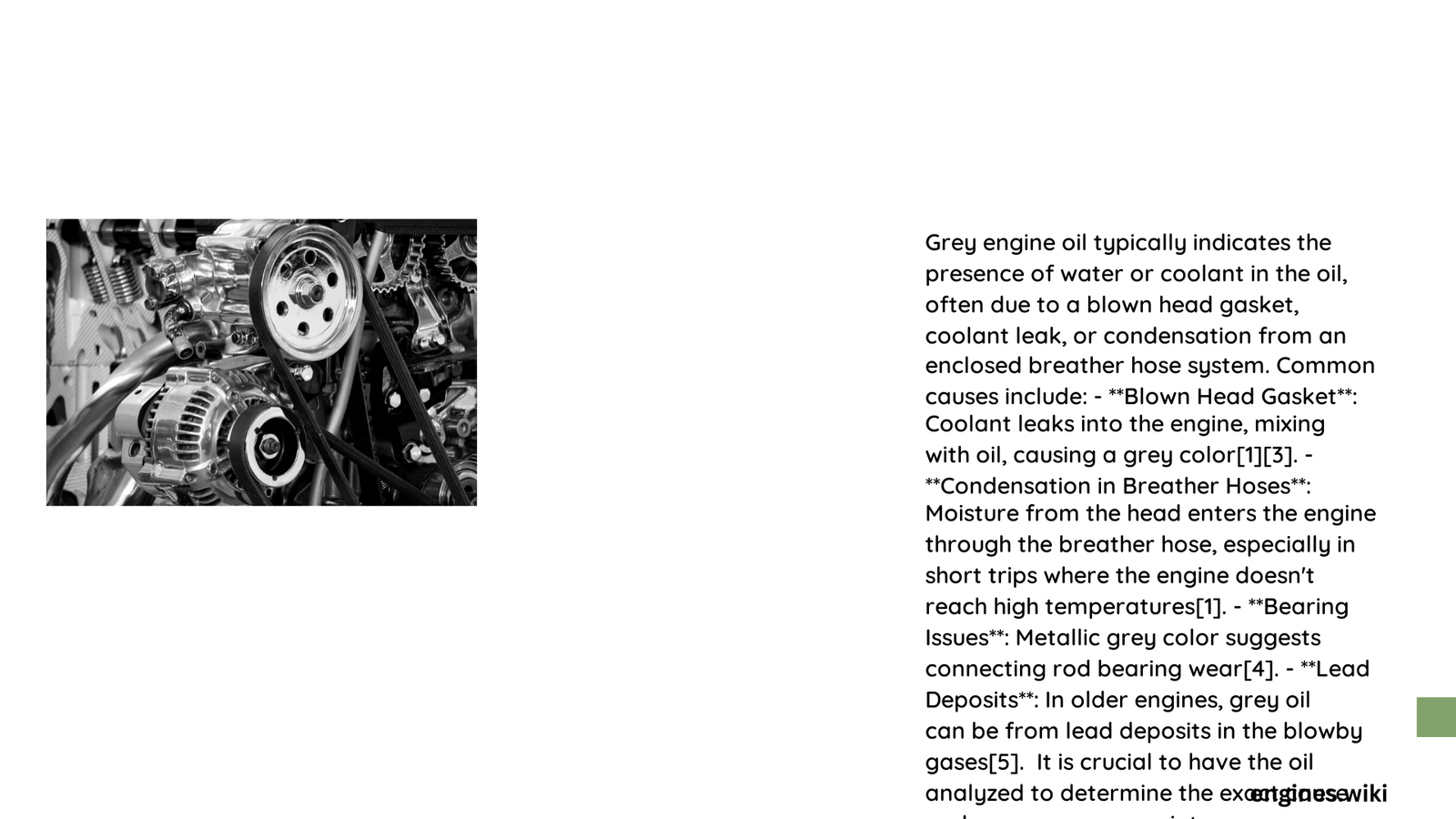Engine oil turning grey is a critical warning sign that signals potential serious problems within your vehicle’s engine system. This discoloration typically indicates water contamination, coolant leakage, or chemical breakdown, which can compromise your engine’s performance and longevity. Understanding the root causes and taking immediate action can prevent expensive repairs and potential engine failure.
What Causes Engine Oil to Turn Grey?
Why Does Water Contaminate Engine Oil?
Water can infiltrate engine oil through multiple mechanisms:
- Head Gasket Failure
- Allows coolant to mix with engine oil
- Creates milky, grey appearance
-
Indicates potential serious engine damage
-
Condensation Buildup
- Short driving trips prevent complete engine temperature reach
- Moisture accumulates in breather hose system
- Leads to gradual oil contamination
What Are the Primary Contamination Sources?
| Contamination Source | Potential Impact | Repair Complexity |
|---|---|---|
| Cracked Engine Block | High engine damage risk | High |
| Faulty Head Gasket | Moderate to severe damage | Medium-High |
| Improper Breather Hose Routing | Gradual performance decline | Low |
How Does Water Affect Engine Oil Performance?
Water contamination dramatically reduces oil’s critical functions:
- Lubrication Degradation
- Decreases protective film between moving parts
- Increases friction and wear
-
Accelerates component deterioration
-
Chemical Composition Alteration
- Introduces organic acids
- Promotes corrosion of metal components
- Compromises overall oil effectiveness
What Symptoms Indicate Grey Engine Oil?
Visual Indicators
- Milky, grey, or foamy oil appearance
- Thick, jelly-like oil consistency
- Visible particle contamination
Performance Signs
- Unusual engine noises
- Reduced acceleration
- Decreased fuel efficiency
- Increased engine temperature
How to Diagnose and Resolve Grey Engine Oil Issues?
Diagnostic Steps
- Perform visual oil inspection
- Conduct cooling system pressure test
- Check breather hose system routing
- Analyze oil sample in professional laboratory
Repair Recommendations
- Immediate oil replacement
- Address specific leak sources
- Replace compromised components
- Regular maintenance checks
What Are Potential Repair Costs?
| Repair Type | Estimated Cost Range | Typical Duration |
|---|---|---|
| Oil Change | $20 – $100 | 30-60 minutes |
| Head Gasket Replacement | $500 – $2,000 | 4-8 hours |
| Breather Hose Repair | $50 – $200 | 1-3 hours |
Prevention and Maintenance Tips
- Follow manufacturer’s recommended oil change intervals
- Perform regular engine inspections
- Monitor oil color and consistency
- Address any performance anomalies promptly
- Use high-quality engine oils
Conclusion

Grey engine oil is a critical warning signal that demands immediate attention. By understanding its causes, recognizing symptoms, and taking proactive maintenance steps, vehicle owners can protect their engines from potentially catastrophic damage.
